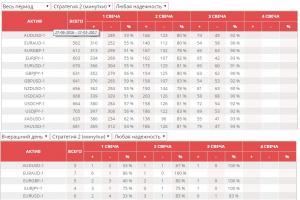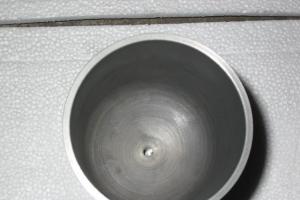Washing machine does not drain water - the problem is familiar to almost all owners of this equipment, but not everyone knows what to do in this case. Before you panic, you need to pay attention to the choice of mode. Almost every second machine has a washing function without spinning - for caring for delicate fabrics or wool. Therefore, the machine can be programmed to wash without spinning, so as not to harm soft tissues. Therefore, there is no breakdown! It is necessary to turn on the “Start - Stop - Cancel” button and assign water drainage.
If nothing has changed, then there is a problem and it needs to be solved!
Problems with draining water
The main sign that something is wrong with the machine is a failure to drain water, which is accompanied by various additional problems. First you need to understand that the causes of breakdowns can be different, and external signs will be different. So, here's a list of problems:
- Drain water is coming at a slow pace and is accompanied by program failure;
- The hitch occurs at the stage of draining the water - it simply does not drain;
- With some types of washing, the water drains safely, but with others, it does not;
- The spin stage is blocked immediately after water;
- The doors are jammed.
The first thing to do in such a situation is to stop work. To do this, you can unplug the cord from the outlet or turn it off using the buttons on the display, and then turn it on to the shortest program - rinse + spin. It is strictly forbidden to carry out various manipulations with the equipment while it is connected to electricity, that is, try to open the doors by force, remove the panel, remove the drain hose, etc.
Further actions completely depend on the cause of the situation, so let’s consider them in more detail.
Washing machine clogs
Drainage problems do not always indicate serious damage to the machine; it could be a simple blockage that makes work difficult. If it is correctly identified and removed, then most likely the machine will continue to function.
The main types of blockages in a washing machine:
- Pump filter clogged. The most common problem why a washing machine does not drain is a clogged pump filter. To clean it, you first need to remove the panel at the lower front. On at this stage you need to be careful and careful, because when you open the cap, be prepared for a sudden release of water. To avoid such a scenario, you need to place a container in which all the liquid will collect. By the way, it is not recommended to open the hatch - this can really lead to a flood! Afterwards, unscrew the filter and look inside. This place is a treasure trove of all kinds of rubbish - coins, buttons and other items can be found here. After cleaning the cavity, put everything back in place and try to turn on the washing machine again.
- Blockage drain hose or siphon. The hose itself may contain debris and plaque, which stops all processes. To check its condition, you need to blow inside - if the sound does not reach the tank, then the hose needs to be thoroughly cleaned. If you connect a hose to a siphon, you need to disconnect the hose, hang it over the bathtub and turn on the mode. If the liquid flows freely, it means it is clogged. sewer system and needs cleaning. Perhaps the passage of water is blocked by debris in the siphon - hair, threads, lint, etc.
- Another problem is a clogged connecting pipe. To get to it, you need to unscrew the bolts securing the drain assembly. Then we take out the pipe, remove the clamp and drain the water from it. To check the insides of the pipe, you need to probe it - remove any debris found. Next, we collect everything to its initial state.
- Debris in the pump. Various parts, stuck in the pump impeller and blocking its operation can also be the cause of many difficulties in the operation of the equipment. The impeller is located immediately behind the filter; you need to twist it and it will be clear whether it is the reason or not. If it doesn't move, it means something is stuck in it. This must be removed immediately and try to turn on the machine again.
If you have difficulty draining the water, you need to check each of the above points step by step. If everything is checked, but the machine still does not drain the liquid, then there is a high probability of serious damage.
Breakdowns
It is worth understanding that the slightest malfunction in the operation of this equipment may indicate breakdowns that need to be urgently identified and eliminated.
The drain pump is faulty.
Pump failure is also a common problem. To check the functionality of the pump, you need to remove the filter again and turn on the spin program. Next, point a flashlight there and see how it works. If the drain pump (pump) does not move, it means it is broken and needs to be replaced. Buying it will not be difficult, because all drain pumps are standard, so you can either use the Internet or go to the market. So, a new pump has been purchased, all that remains is to replace it! Therefore, you need to remove the drain assembly and detach the pump from it. Then carefully remove the wires. When all this is done, we take a new drain pump, install it in place of the old one and connect the wires to it. Well, then all that remains is to assemble the washing machine to its original state.
The electronic module has broken down.
This situation occurs in economy class equipment. And all because expensive machines are programmed to block if the water drains slowly or does not drain at all. The electronic module signals violations and turns off the drain pump. Cheap washing machines do not have such functions, and will transmit the command to the pump until the board simply burns out. It is believed that this is how car manufacturers simply stimulate their sales.
The bearing has failed.
To find out if the bearing is broken, you need to disconnect the washing machine from the electricity and spin the drum manually. If you hear a grinding noise, the drum moves hard, or the balls roll around inside, then there are obvious problems with the bearing. This problem cannot be fixed on your own at home, you need to call a professional for help. The severity of the breakdown will determine whether the bearing needs to be replaced with a new one, or whether repairs can be done - a specialist will help resolve this issue.
The water level sensor is broken.
If the water level sensor breaks down, the machine cannot calculate how much water is left and when to turn off the program. Before repairing this part, you need to check whether it is really damaged. The water level sensor is located on the side wall at the top. To get to it, you need to unscrew two bolts at the back and remove top cover. Next, unscrew the sensor, or rather a couple of bolts that secure the part. After this, disconnect the attached hoses and contacts; this can be done by pulling out the chip. Further diagnostics consists of inspecting the sensor and tubes - they should be intact without contamination. If a blockage or any damage is visible, it must be eliminated.
The main thing in the operation of any equipment is to treat it with care and use it only in accordance with the instructions. This will ensure long-term operation without unnecessary complications.
In the modern world, washing has not been a burden for people for a long time. Manufacturers such as Samsung, Indesit, LG came to the rescue, creating an irreplaceable assistant. After the advent of automatic washing machines, washing ceased to be hard work. Regardless of the number of family members, mountains of dirty laundry are a thing of the past, since an automatic machine does this work for everyone. It doesn’t matter what brand the washing machine is, Indesit, Samsung, LG, unfortunately, any equipment can malfunction and washing machine not an exception.
One of these breakdowns may be a failure to drain water. What to do if the machine does not drain water, but hums. Every owner wonders how to drain the water. In the event of various breakdowns, people are often accustomed to seeking help from specialized workshops or service centers to troubleshoot problems, but this can wait.
What to do if the washing machine does not drain water
If the machine stops draining water, it means some kind of failure has occurred. and you can try to fix such a breakdown without the help of a workshop, of course, if the pump is not worn out.
The cause of such a malfunction can be both externally and internally. So why doesn't the washing machine drain? Externally, the repair can be eliminated by getting rid of the clogged sewer pipe, drain hose and pipe. And if the breakdown is in the nutria, then you need to examine the unit for the cause of foreign debris, check whether the filter is clogged, or simply an incorrect supply of electricity to the machine itself.
One of the reasons may be a breakdown of the pump, which is located inside the device.. If the pump breaks down, how to drain the water. Before working on troubleshooting a drain problem, you need to disconnect the device from electricity. First you need to understand how to drain the water and free the device. To do this, you will need to open the removable panel at the bottom of the machine, unscrew the filter located there and carefully tilt the device forward a little and pour water into a suitable container. 
Also for draining water, but you can use an ordinary tube, which must be inserted into the hole for draining water, and it is located on the rear panel at the bottom of the machine. To do this, you must first remove the drain hose. The hose needs to be checked for kinks, the pipe needs to be cleaned; if water does not flow well through the hose, then there is a possibility of it becoming clogged. One of the reasons for a water drain failure may be a failure to correct angle installing a drain hose into a sewer pipe.
After all of the above, you need to check the siphon and sewer pipes, a cable is suitable for this, which can deal with the blockage mechanically. The next step is to inspect the filter, because over the entire period of washing, debris may have accumulated in it and water may not pass through it freely. The filter is located behind a removable panel at the bottom of the washing machine. You will need to remove the panel by prying it up with a knife or screwdriver, check that there are no additional fastening bolts, and unscrew the filter using force, because it is tightly screwed in with an additional rubber gasket. Before unscrewing the filter, you need to prepare any large rag that absorbs water well. After the filter is unscrewed, water flows onto the floor. You need to thoroughly clean the filter from foreign objects and debris, if any, rinse it and inspect the pump.
Checking the pump
To do this, you need to look into the hole from which the filter was unscrewed; behind it there is an impeller made of plastic. Having reached it with your hand, you need to twist it in different directions, it should rotate freely, and if something interferes, it means that debris consisting of threads, feathers and pieces of fabric could wrap around it and the pump stopped working. You need to carefully remove debris from the impeller and try to start the washing machine without connecting the water supply; it should rotate freely. If the impeller still does not spin, then you will have to contact a workshop. After inspection, you need to reassemble the washing machine in reverse order, giving it a working appearance. There they will check the pump and determine why the washing machine does not drain the water.
Usually, such simple preventive actions allow you to bring the device into working condition, and the drain begins to work as usual, if the problem is not with the pump. To prevent such incidents from putting the device out of working condition, you must follow simple rules for the prevention and cleaning of the machine. Once every 2 years you need to clean the filter of debris by unscrewing it.

No matter what the car breaks down, Special attention you need to pay attention to the washing modes; you cannot wash things of different fabric compositions together. Samsung and l g machines have proven themselves well in the market, but l g is inferior in the selection of programs. Before loading items into the wash, you need to thoroughly check all pockets for foreign objects to avoid clogging the filter and pump. Do not load the washing machine more than the instructions indicate. If a network filter is installed, this will help save the device from voltage surges. But the machine may stop draining water in other cases, one of which is a failure of the electronic module in the device, it is responsible for the washing modes, l g and samsung will give an error, but such a breakdown cannot be corrected on your own.
Also, if the pump in the washing machine fails, it cannot be repaired, only replacement, which can be done in a service workshop. Samsung or l g companies will easily provide the right pump.
20.09.2016 / from https://site/wp-content/uploads/2016/09/86305412_large_ff-min.jpg 260 600 admin https://www..pngadmin 2016-09-20 11:11:26 2016-09-20 11:11:26 Why the washing machine does not drain water reasonsThe program stopped in the middle of the cycle, but the washing machine does not drain the water? This is one of the common technology problems. The causes of the problem may be operating errors or a breakdown of one of the washing machine components. Inspection and diagnostics of equipment will help to accurately determine the problem area.
First, let's look at how the problem manifests itself:
- After washing the drain does not work.
- The water drains very slowly and does not drain completely.
- Water remains after rinsing.
- The equipment does not wring out laundry.
- The washing machine takes in water and does not drain.
Depending on the brand of the washing machine Bosch, Samsung, Zanussi, Ariston, a fault code may appear on the display, which will indicate the cause of the problem.
At the same time, you may hear extraneous sounds: hum, crackling. Before you begin troubleshooting, rule out control errors:
- Make sure it's installed correct mode . Programs for wool and delicate fabrics run without spinning, so the appliance stops with water. If so, start the drain mode manually.

- Inspect the drain hose for kinks and creases.. It should be positioned evenly without twisting.
- Check if the siphon or drain is clogged. It is important where the hose is connected. The blockage interferes with the normal flow of fluid. You can clean the siphon yourself, but to clean the sewer it is better to contact a plumber.
Is everything okay with communications and the regime? Then the problem is a malfunction or a blockage. What could have happened:
- The drain system is clogged. In this case, the drain pump does not turn off and hums, trying to drain the liquid. Worth checking out drain filter, pipe and pump.
- The pump is broken. Perhaps the impeller has failed or the windings have burned out. Crackling and humming noises during operation may be signs of pump bearing wear.
- The pressure switch does not work. This is a sensor that monitors the water level in the tank. If it does not signal to the module that there is liquid in the tank, then the drain does not turn on or the water does not completely drain.
- Electronic board burned out. The “brain” of the machine does not give a command to the pump, so it does not work.
Having examined the main breakdowns of the automatic washing machine (WMA), you can begin repairs.
What to do if the SMA does not drain water?
Start by rebooting your equipment. Perhaps there was a system failure, so the work stopped.
- Disconnect the SMA from the network.
- Wait 10–15 minutes.
- After switching on, check the operation.
Have the problems recurred? Below are the symptoms of the problem and recommendations for resolving them.
Drains, but not completely
The pump in SMA LG, Indesit, Kandy, Ardo works, but the liquid does not drain completely. The problem is the pressure switch or a blockage (we will talk about it below). A hose is connected to the level sensor, which picks up the pressure. The more the tank is filled, the more the pressure increases, to which the pressure switch reacts. But if the hose is clogged, then the readings are not accurate.

And if the sensor breaks down, the module does not receive messages at all.
How to check the part:
- Unplug the washer from the socket.
- Remove the two bolts from the back that secure the top cover.
- After removing the cover, you will find a level sensor on the side wall.

- Disconnect its hose and clear the blockage.
- To check the pressure switch, replace the hose with a tube. Blow into it. If you hear clicks, the part is working properly.
The pressure switch is inexpensive and is not difficult to replace. Disconnect the wiring from the contacts, unscrew the fastening screw. Install the new part. Watch the video for details:
The washing machine is clogged
You can remove the blockage and at the same time drain the water from the tank as follows:
- Under the loading hatch there is a small door, and behind it is a drain filter.
- In some models, the CMA filter is located behind the base panel.
- Release the latches or unscrew the panel bolts.
- The part can be easily unscrewed by moving it counterclockwise. If the drain filter does not open, make sure there is no screw holding it in place.

After removing all the fasteners, the drain plug does not unscrew? If used for a long time without cleaning, it could become stuck. Spray it with lubricant and wait 30 minutes.
Place the container and drain the water. Remove debris from the filter. Threads, hair, small debris, and coins often accumulate in it. Do not rush to return the clean filter to its place; inspect the pump impeller.
- Shine a flashlight into the mounting hole.
- Turn the impeller by hand.
Rotating? So it works properly. Is it standing still? There may be a thread wrapped around it. Disassembling the washing machine will help you remove it.
If the impeller is blocked, the pump may hum but not drain.

Now you need to clean the pipe and pump. Depending on the model of the machine (Atlant, Veko, Electrolux, Whirlpool), you can access the pipe through the bottom or rear panel.
- Lay a blanket on the floor.
- Turn the machine over onto its back wall.
- If the washer has a bottom, remove it.
- Loosen the clamps that secure the pipe to the pump and tank.
The washing machine does not drain water - we eliminate the reasons
Be careful, water will flow!

- Clean the part. If there are ruptures or damage, replace the element.
Disconnect the drain hose from the pump. Remove foreign objects from the impeller. In the article “How to disassemble a washing machine pump” we described the repair and diagnostics of the unit. To replace, disconnect the pump wiring and unscrew the mounting bolts.
Stop work, water in tank
If all elements are checked, then examine the control module using the method of exclusion. For this:
- Remove the top cover of the Siemens or Hansa SMA.
- Remove the powder tray by pressing the latch in the center.

- Remove the screws around the perimeter of the control panel.
- Inspect the module wiring harness. If burns or insulation damage are visible, replace it.
- If the control board is damaged, take it to a service center. It makes sense to repair the element yourself if you have previously done similar work.
It is always easier to prevent a breakdown than to repair it. Follow the basic operating rules:
- Do not overload the equipment, otherwise all components will wear out.
- Clear pockets of items of debris before loading.
- Connect the device to the network through a voltage stabilizer.
- Clean the drain filter every six months.
emergency, water, machines, remains, spin, bad, reasons, problem, programs, modes, drain, tips, washing, washing, elimination, filter, cleaning
Washing machine clogged
Sometimes during operation the washing machine becomes clogged and, as a result, problems with draining water and generally interruptions in operation. Why do blockages occur? How to protect your machine from clogging? Where does the blockage occur? How does a clog harm a washing machine? Here are the answers to the questions asked:
- What causes blockages?.
- Preventing blockages.
- How does the drain system work?.
- Where does clog accumulate in the drain system?.
- How does a clog affect the operation of the machine?.
1. What causes blockages
First of all, these are foreign objects that enter the drainage system along with clothes. These are small items from pockets, toothpicks, underwires from bras, too small fragments of clothing.
The blockage also forms naturally, as a result of the accumulation of tiny particles of lint and animal hair in the filter and other parts of the drainage system over the years of operation of the washing machine.
2. Prevention of blockages
To save yourself from unnecessary expenses and wasting time, it is advisable to check your clothing pockets and remove everything from them. small items. Wash small items such as bras, baby socks, etc. in a special bag. It is also useful to periodically clean the pump filter.
3. How the drain system works
In most models, during draining, water from the washing machine tank flows into a corrugated rubber drain pipe. Then the pump filter passes through, which you can unscrew and clean yourself.

This filter is needed to prevent various foreign objects (small change, buttons, lint, etc.) from entering the drain pump impeller. If a foreign object gets onto the impeller during draining, the pump may jam and draining will not occur.
After the filter, the water enters the pump impeller, which rotates and creates pressure, due to which it drains into the sewer. The number of impeller blades may be different, but this does not change the essence of the process.
From the pump, water moves through the drain hose. This hose runs inside the washing machine body, exits at the top or bottom of the machine and connects either to a siphon under the sink or directly to a sewer system pipe.
4. Where does clog accumulate in the drain system?
Pump filter. First of all, the clog accumulates in the pump filter. In fact, this is what the filter is designed to do: stop the movement of foreign particles through the system and remove them from there. If the water does not drain from the washing machine, then first of all check the filter, which is located in the lower part of the machine in front, almost near the floor.
At the junction of the tank and the pipe. But particularly large pieces of laundry or particles from a broken rug may get stuck before reaching the filter. This happens because most models of washing machines have a round ball in the rubber pipe that connects the tank to the pump. It prevents particularly large objects from entering the drainage system.
Tank drain pipe. Go ahead. It happens that old rugs partially fall apart during washing and their small rubber particles penetrate through the ball into the nozzle. A large number of Such small particles can clog the corrugated pipe itself.
Pump impeller.
Why doesn't the washing machine drain water?
It happens that lint or pieces of clothing penetrate the filter and wrap around the pump impeller. Then rotation does not occur, the pump jams and a quiet hum is heard. If you remove the filter and shine it with a flashlight, you can see the impeller and free it from the blockage.
Drain hose. Less commonly, blockages occur in the drain hose. As a rule, the fault is small lint, which, having passed all the obstacles, gradually accumulates in the hose. Then you need to either blow out the drain hose without removing it from the machine, or disconnect it and clean it more thoroughly.
The junction of the drain hose and the sewer.
The last stage of the blockage is where the drain hose is attached to the drain system. This can be either a siphon under the sink, or the sewer pipe itself. Typically, the clog will accumulate at the joint where there are ledges where lint accumulates. To check, simply disconnect the drain hose and check the outlet from the siphon.
5. How does a blockage affect the operation of the machine?
As a rule, the drain system does not clog immediately. This happens gradually, over many months. During this time, the cross-section of the pipes and channels through which water passes decreases. Therefore, in order to drain a certain volume of water, the pump must run longer. As a result, it wears out faster and exhausts its service life, after which it needs to be replaced.
The automatic washing machine is an indispensable assistant in household chores, because it significantly facilitates the washing process and saves precious time, but, like any other equipment, it can break down. There is no need to be upset about this, since home repairs are now quite accessible. service departments, and some breakdowns and malfunctions can be eliminated on your own.
The washing machine does not drain water. What to do?
There are a huge number of malfunctions of washing units, and the reasons for their occurrence are completely different. The most common breakdowns are when the water does not drain and, accordingly, the laundry does not spin out. The second option: water is collected and immediately drained.
Water is automatically removed from the washing machine several times during the entire dirt removal cycle. The initial and main wash takes place first, the water is removed during the rinsing process and the end of the stain removal process. This happens with the help special device- pumps. This is a small engine equipped with an impeller, which, when rotated, causes water to flow out of the tank and flow through the drain hose into the sewer network. If there is no water drainage from the washing machine, this means that the pump needs to be replaced.
If the washing machine does not drain water, you first need to determine the cause of this breakdown. Sometimes just reading the instructions is enough. Almost every operating rule indicates visible malfunctions in which the machine pumps out slowly, poorly, or does not drain or pump up water at all. Such defects in the operation of the unit can be easily corrected yourself.

Clogged washing machine drain system
Now let's look at some reasons for the malfunction of washing machines. Basically they are all the same for most models. When a BOSCH washing machine does not spin or drain water, the water drain pump must be checked. The pump impeller can be slowed down by small objects that got into the machine from unchecked clothes that were loaded into the drum. In such cases, the machine hums, but the water does not drain. First of all, the drain pump filter must be checked, which retains all foreign objects that interfere with the flow of water. On the one hand, the filter prevents foreign objects from entering the sewer system, and on the other hand, it allows you to save objects that accidentally ended up in your clothing pockets.
It is also necessary to check and, if necessary, clean the axis of the pump impeller, on which threads may have become wound; to do this, you need to remove and disassemble the drain pump. The procedure for cleaning the filter is described in detail in the operating instructions for any washing machine.

Clogged washing machine pipe
When removing dirt from small items, such as handkerchiefs, there is a possibility that they may end up in the washing machine tub. After it, they may end up in the pipe that leads from the tank to the pump. Therefore, when the washing machine does not drain water, it is necessary to probe all the tubes that lead to the pump. This occurs especially often after washing the genitals. door mats. The pipes become clogged with sand and must be cleaned, otherwise the water will not drain.
Incorrect drain hose connection
While removing dirt, the washing machine does not drain water. What is the cause of this problem? Most often this happens due to improper connection of the drain hose. With this discrepancy, only partial blockage may be possible at the point of its connection to the sewer system. The washing machine will only hum, but the water will not drain. The hose must be connected correctly. It is advisable to do this according to the instructions.
Also, the water will not drain if the hose is attached very high or is crushed by something. These shortcomings should be eliminated, and anyone can drain the water from the washing machine.
It's quite easy to check if the hose is clogged - you just need to place it in the sink and observe whether water flows out of it when draining. If liquid comes out, then the next step is to check the drain for blockages. If none of the above methods help, there is probably a problem with the washing unit itself.

Causes of poor spinning of laundry
The laundry does not spin, and, accordingly, the washing machine does not drain the water. What to do in these cases? The cause must be identified.
The washing machine may not spin clothes when the wrong wash cycle is selected. It happens that due to inattention, the gentle mode for washing woolen or delicate fabrics is turned on. This program does not involve spinning, as the materials may be damaged.
Some modifications of washing machines can change the number of revolutions per minute. This can happen accidentally, that is, when low speed was turned on. The laundry will not be completely wrung out and will remain excessively damp after the end of the wash cycle.

The main malfunctions are when the laundry does not spin. Ways to eliminate them
Most often, problems with the washing machine can occur when water fills or drains while removing contaminants. There are many main malfunctions in which the washing machine does not drain water. Poor spinning of clothes can be due to several reasons:
1. The drain pump does not work. Then the spin mode will not function correctly: the water will not drain into the sewer. If such a breakdown occurs, the drain pump must be replaced.
2. Has fallen into disrepair water level sensor. In good condition, it sends a signal to the control unit about the water level in the tank, which determines the need to drain. If no signal was received and the sensor did not work, then the control did not receive the required signal, and therefore the spin mode does not turn on. The sensor must be replaced.
3. The board has failed. It needs to be replaced or reflashed.
4. The washing machine motor does not work. It needs to be repaired or replaced.
5. The rpm control sensor does not work.
The washing machine immediately drains the water. Why?
By purchasing any household appliances, people do not assume in advance that breakdowns or malfunctions may occur in it in the near future. This also applies to the washing machine. It happens that, without even starting the washing process, the washing machine immediately drains the water that it has just collected. This malfunction may occur due to improper installation or connection of the unit. This occurs due to the long length of the drain hose. Such a breakdown is commonly called self-draining. This malfunction can occur automatically, because the entire operation of the washing unit is programmed and can simply fail if a malfunction occurs.

Reasons why the machine immediately drains water
Each brand may have its own problems. The reason that the Indesit washing machine drains water immediately after it has filled it may be due to the low level of the drain hose. The operating instructions must be strictly followed of this device and install this hose correctly, because the rules precisely indicate its height level for efficient work. In this case, there will definitely be no malfunctions that will need to be fixed later.
When filling, the washing machine collects a certain level of liquid until the hose bends, after which the Indesit washing machine drains the water completely. It happens that the quantity is not enough, and the device starts the process of filling water again. This can continue for a long time until the wash time ends.

In order to avoid problems, in particular those in which the washing machine does not drain water, it is necessary to adhere to certain measures to prevent breakdowns of these devices. Here are some tips:
1. Before washing clothes, you must carefully check all pockets for foreign objects: small parts, papers and coins.
2. When loading the machine’s tank with laundry, do not overload it; it is recommended to adhere to the specific weight specified in the instructions. Then the drum will work for a long time without breakdowns.
3. So that it does not arise unnecessary problems, it is necessary to use high-quality powder and use it in the right volume.
4. Best used while washing network filter, which will help protect the electronic device from voltage surges and electrical network failures.
It is quite difficult to determine the true cause of a washing machine breakdown on your own. It is recommended to contact a service center, where the cause of the malfunction will be accurately determined and corrected quickly.








